Emergent exploration via novelty management
- PMID: 25232104
- PMCID: PMC6705324
- DOI: 10.1523/JNEUROSCI.1872-14.2014
Emergent exploration via novelty management
Abstract
When encountering novel environments, animals perform complex yet structured exploratory behaviors. Despite their typical structuring, the principles underlying exploratory patterns are still not sufficiently understood. Here we analyzed exploratory behavioral data from two modalities: whisking and locomotion in rats and mice. We found that these rodents maximized novelty signal-to-noise ratio during each exploration episode, where novelty is defined as the accumulated information gain. We further found that these rodents maximized novelty during outbound exploration, used novelty-triggered withdrawal-like retreat behavior, and explored the environment in a novelty-descending sequence. We applied a hierarchical curiosity model, which incorporates these principles, to both modalities. We show that the model captures the major components of exploratory behavior in multiple timescales: single excursions, exploratory episodes, and developmental timeline. The model predicted that novelty is managed across exploratory modalities. Using a novel experimental setup in which mice encountered a novel object for the first time in their life, we tested and validated this prediction. Further predictions, related to the development of brain circuitry, are described. This study demonstrates that rodents select exploratory actions according to a novelty management framework and suggests a plausible mechanism by which mammalian exploration primitives can be learned during development and integrated in adult exploration of complex environments.
Keywords: active sensing; hierarchical model; intrinsic motivation; reinforcement learning; whisker system.
Copyright © 2014 the authors 0270-6474/14/3412646-16$15.00/0.
Figures
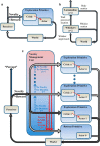

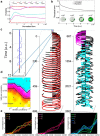
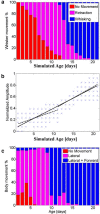
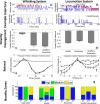
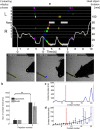
Similar articles
-
Learning and control of exploration primitives.J Comput Neurosci. 2014 Oct;37(2):259-80. doi: 10.1007/s10827-014-0500-1. Epub 2014 May 7. J Comput Neurosci. 2014. PMID: 24796479
-
Hierarchical curiosity loops and active sensing.Neural Netw. 2012 Aug;32:119-29. doi: 10.1016/j.neunet.2012.02.024. Epub 2012 Feb 14. Neural Netw. 2012. PMID: 22386787
-
Reinforcement active learning in the vibrissae system: optimal object localization.J Physiol Paris. 2013 Jan-Apr;107(1-2):107-15. doi: 10.1016/j.jphysparis.2012.06.004. Epub 2012 Jul 9. J Physiol Paris. 2013. PMID: 22789551
-
A night in the life of a rat: vibrissal mechanics and tactile exploration.Ann N Y Acad Sci. 2011 Apr;1225:110-8. doi: 10.1111/j.1749-6632.2011.06007.x. Ann N Y Acad Sci. 2011. PMID: 21534998 Review.
-
Visual novelty, curiosity, and intrinsic reward in machine learning and the brain.Curr Opin Neurobiol. 2019 Oct;58:167-174. doi: 10.1016/j.conb.2019.08.004. Epub 2019 Oct 10. Curr Opin Neurobiol. 2019. PMID: 31614282 Review.
Cited by
-
Striatal dopamine explains novelty-induced behavioral dynamics and individual variability in threat prediction.Neuron. 2022 Nov 16;110(22):3789-3804.e9. doi: 10.1016/j.neuron.2022.08.022. Epub 2022 Sep 20. Neuron. 2022. PMID: 36130595 Free PMC article.
-
Behavioural plasticity in evolving robots.Theory Biosci. 2016 Dec;135(4):201-216. doi: 10.1007/s12064-016-0233-y. Epub 2016 Jul 21. Theory Biosci. 2016. PMID: 27443311
-
Nicotinic receptors in the ventral tegmental area promote uncertainty-seeking.Nat Neurosci. 2016 Mar;19(3):471-8. doi: 10.1038/nn.4223. Epub 2016 Jan 18. Nat Neurosci. 2016. PMID: 26780509
-
Intermale aggression in mice, selected for the cognitive trait.Dokl Biol Sci. 2017 Jul;475(1):151-153. doi: 10.1134/S001249661704010X. Epub 2017 Sep 1. Dokl Biol Sci. 2017. PMID: 28861872
-
Parallel Inhibitory and Excitatory Trigemino-Facial Feedback Circuitry for Reflexive Vibrissa Movement.Neuron. 2017 Aug 2;95(3):673-682.e4. doi: 10.1016/j.neuron.2017.06.045. Epub 2017 Jul 20. Neuron. 2017. PMID: 28735746 Free PMC article.
References
-
- Baldassarre G. What are intrinsic motivations? A biological perspective. Paper presented at IEEE International Conference on Development and Learning (ICDL); August; Frankfurt am Main, Germany. 2011.
Publication types
MeSH terms
LinkOut - more resources
Full Text Sources
Other Literature Sources
